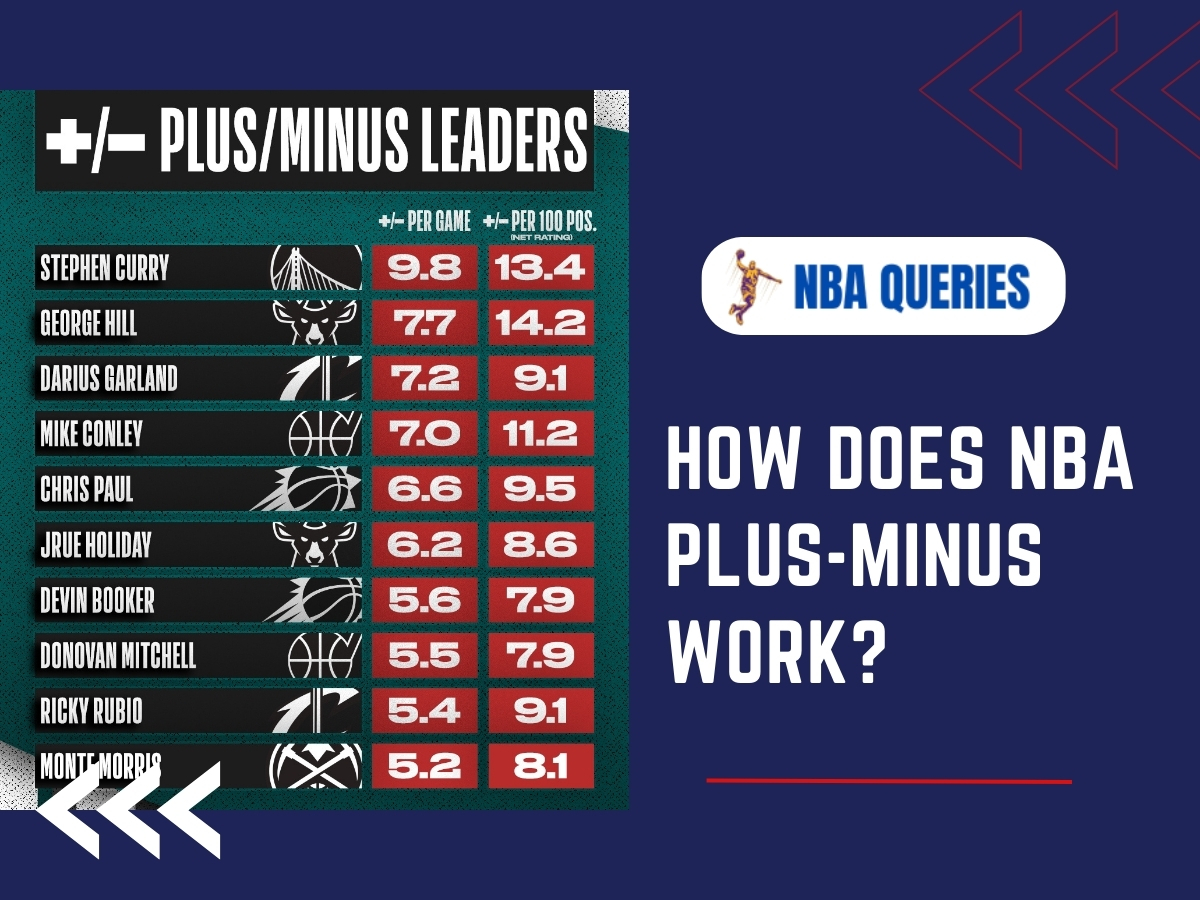The NBA plus-minus statistic is an essential tool for evaluating player performance. It measures the point differential when a player is on the court, indicating their impact on the game. This article explores the nuances of plus-minus, its calculation, applications, and limitations.
What is NBA Plus-Minus?
Plus-minus (+/-) is a stat used to gauge the net impact of a player on the game’s score. It tracks the difference between the points scored by a player’s team and the points allowed while the player is on the court. This metric was officially introduced in the NBA during the 2007-2008 season to provide a more comprehensive view of player contributions beyond traditional statistics.
Calculating Plus-Minus
The formula for calculating plus-minus is straightforward:
Player’s Plus-Minus=(Team’s Points Scored While Playing)−(Opponent’s Points Scored While Playing)
For example, if a player’s team scores 50 points and allows 40 points while they are on the court, their plus-minus would be +10.
Types of Plus-Minus Metrics
Beyond the basic plus-minus, several advanced metrics provide deeper insights:
- Adjusted Plus-Minus (APM): Accounts for the quality of teammates and opponents.
- Real Plus-Minus (RPM): A refined version of APM that separates offensive and defensive impacts.
- Box Plus-Minus (BPM): Combines box score stats with plus-minus.
Benefits of Plus-Minus
Plus-minus is valuable for capturing contributions that don’t appear in box scores, such as setting screens, playing solid defense, and facilitating team plays. It helps coaches and analysts identify effective player combinations and assess overall team performance.
Examples and Usage
High plus-minus values are often seen in elite players. For instance, Draymond Green recorded a +1073 plus-minus during the 2015-16 season, a record-setting performance. Similarly, Stephen Curry has consistently high plus-minus ratings, underscoring his impact on the court.
Limitations of Plus-Minus
While insightful, plus-minus has limitations:
- Context Dependency: It depends heavily on teammates and opponents, potentially skewing results.
- Sample Size: Accurate assessments require a large number of games to mitigate anomalies.
- Game-to-Game Variability: Single-game plus-minus can be misleading due to the high variability in player performance and matchups.
Improving Plus-Minus Accuracy
To address these limitations, analysts use variations like Net Plus-Minus, which considers how teams perform without a specific player, and more sophisticated metrics like RPM and BPM that adjust for teammate and opponent quality.
Practical Applications
Coaches use plus-minus to evaluate player performance, optimize lineups, and make strategic decisions. For instance, a player with a high plus-minus may be prioritized for crucial game moments.
Read:
- How Does NBA Luxury Tax Work? The Complete Details
- How Does the NBA Draft Order Work? The Complete Details
- How do NBA Fantasy Points Work? Decoding the Facts!
Real-World Examples
Notable High Plus-Minus Performances
High plus-minus ratings often highlight players with significant impacts on their teams. For instance, Luc Richard Mbah a Moute recorded a +57 for the Houston Rockets in a game against the Denver Nuggets on November 22, 2017. This performance was pivotal in Houston’s 125-95 victory, illustrating how a player’s presence on the court can drastically influence the game outcome.
Draymond Green’s record-setting +1073 plus-minus during the 2015-16 season further demonstrates the utility of this statistic in identifying impactful players. Green’s defensive prowess and playmaking abilities contributed to the Golden State Warriors’ historic 73-win season.
Understanding Context in Plus-Minus
The Role of Teammates and Opponents
A player’s plus-minus rating is influenced by their teammates and the quality of the opposition. For example, Shane Battier’s high plus-minus in a game where the Miami Heat outscored the Chicago Bulls by 42 points during his time on the court reflects not only his contributions but also the overall performance of his team, including stars like Dwyane Wade and LeBron James.
Advanced Metrics and Their Impact
Real Plus-Minus (RPM)
RPM, developed by ESPN, separates the offensive and defensive contributions of a player, providing a more nuanced view of their impact. This metric adjusts for the quality of teammates and opponents, offering a clearer picture of a player’s true value.
Box Plus-Minus (BPM)
BPM, created by Daniel Myers, combines box score statistics with plus-minus data. This metric considers various factors such as scoring, playmaking, and defensive efforts, giving a comprehensive assessment of a player’s performance.
Applications in Coaching and Strategy
Coaches use plus-minus to make informed decisions about player rotations and strategies. For instance, identifying player combinations with high plus-minus ratings can help in forming effective lineups. This data-driven approach enables coaches to optimize team performance and maximize player contributions.
Analyzing Lineups and Rotations
By examining plus-minus ratings over a series of games, coaches can determine which player combinations work best. This analysis helps in forming lineups that enhance team chemistry and performance. For example, a coach might prioritize a lineup that consistently outperforms opponents when on the court together, even if individual player stats don’t stand out.
Challenges and Considerations
Sample Size and Variability
Plus-minus is most effective when used over a large sample size. Single-game plus-minus ratings can be misleading due to the high variability in basketball games. Consistent high plus-minus ratings across many games are more indicative of a player’s true impact.
Contextual Analysis
Interpreting plus-minus requires understanding the context of each game. Factors such as the quality of opponents, game pace, and specific matchups play a significant role in determining plus-minus ratings. For instance, a player might have a lower plus-minus against top-tier teams compared to games against weaker opponents.
Final Takeaway!
The NBA plus-minus statistic is a vital tool for evaluating player performance and understanding their impact on the game. While it has limitations, such as dependency on teammates and game context, advanced metrics like RPM and BPM enhance its accuracy. By leveraging plus-minus effectively, teams can make data-driven decisions to improve their strategies and optimize player contributions.

